Abstract
1. Preterm infants show incompletely developed skin with reduced barrier function. The possibility of transdermal delivery of theophylline from hydrogel discs swollen with choline theophyllinate has been investigated. 2. Drug loaded hydrogel discs 2 cm2 in area were applied to the abdomen and occluded. Serum theophylline concentrations were measured in twenty-one infants of less than 31 weeks gestation. 3. Therapeutic concentrations were achieved in 18 individuals, and maintained for up to 15 days after repeated application of discs. A correlation between maximum serum drug concentration and transepidermal water loss, gestation and birthweight was demonstrated.
Full text
PDF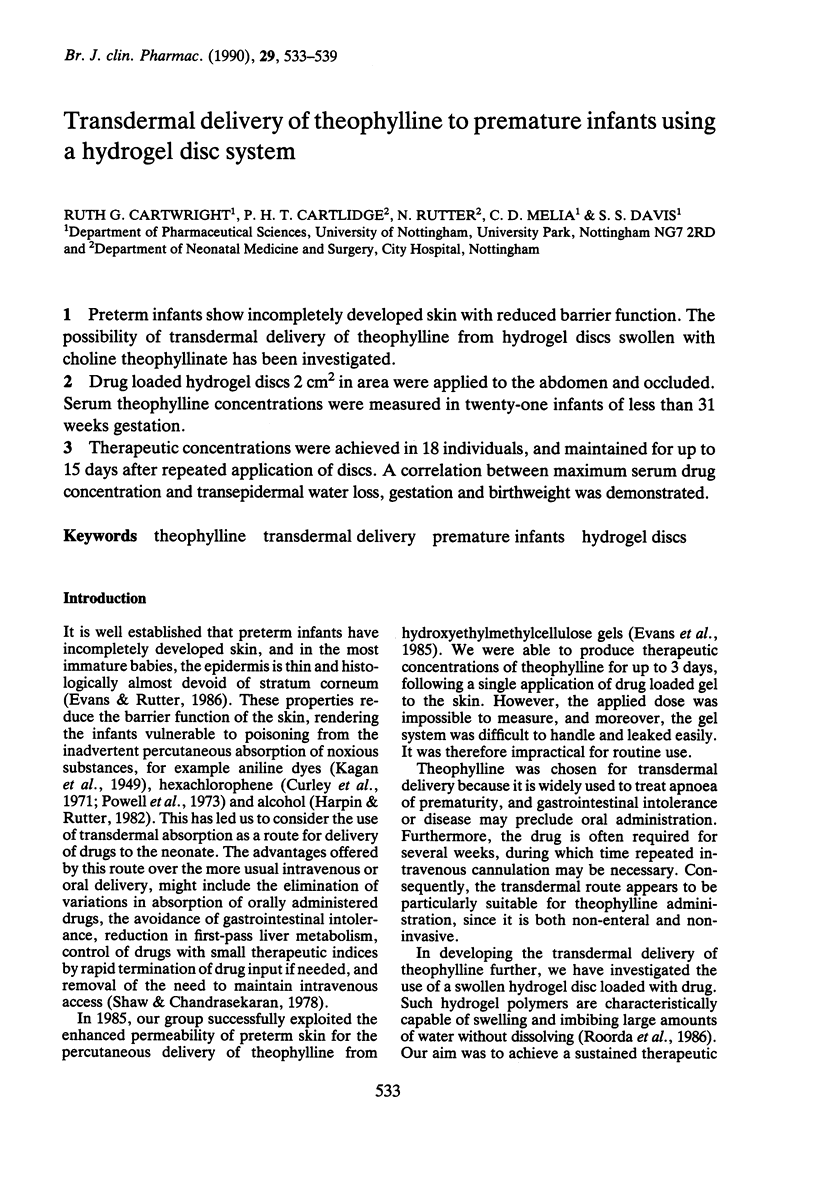
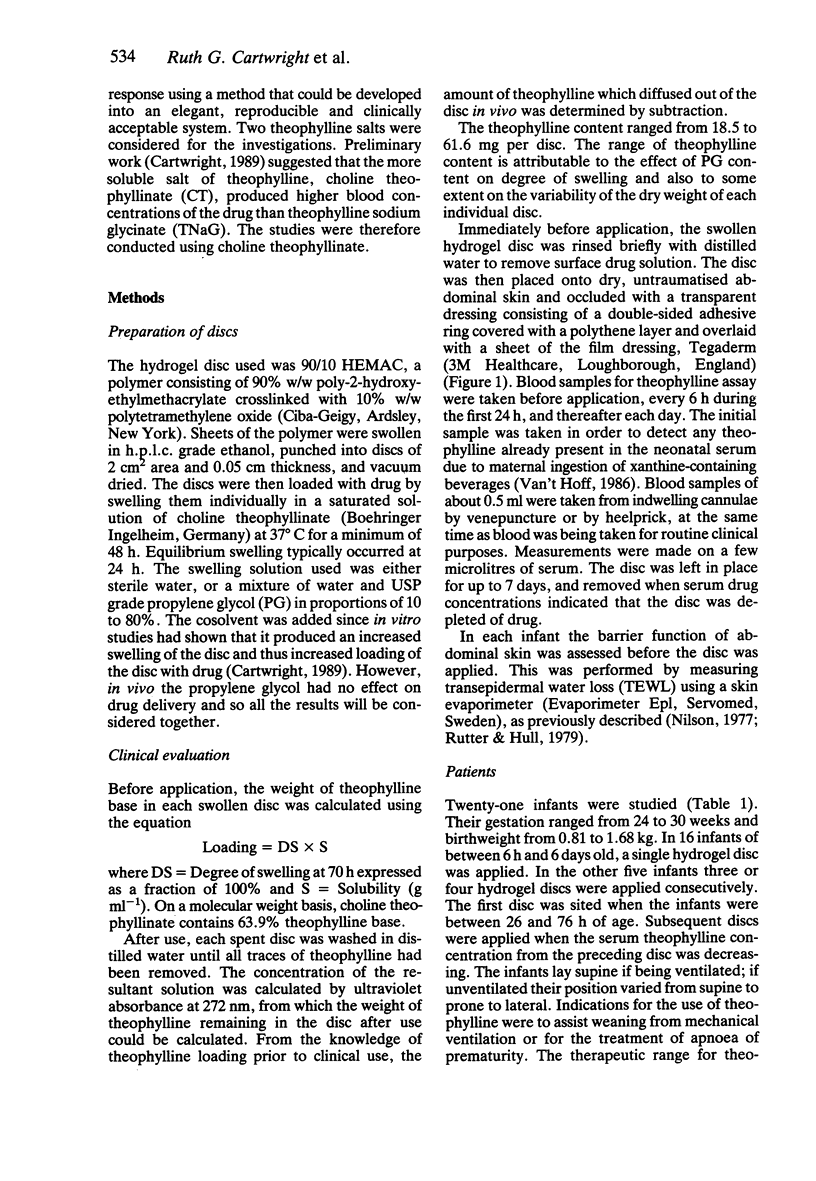
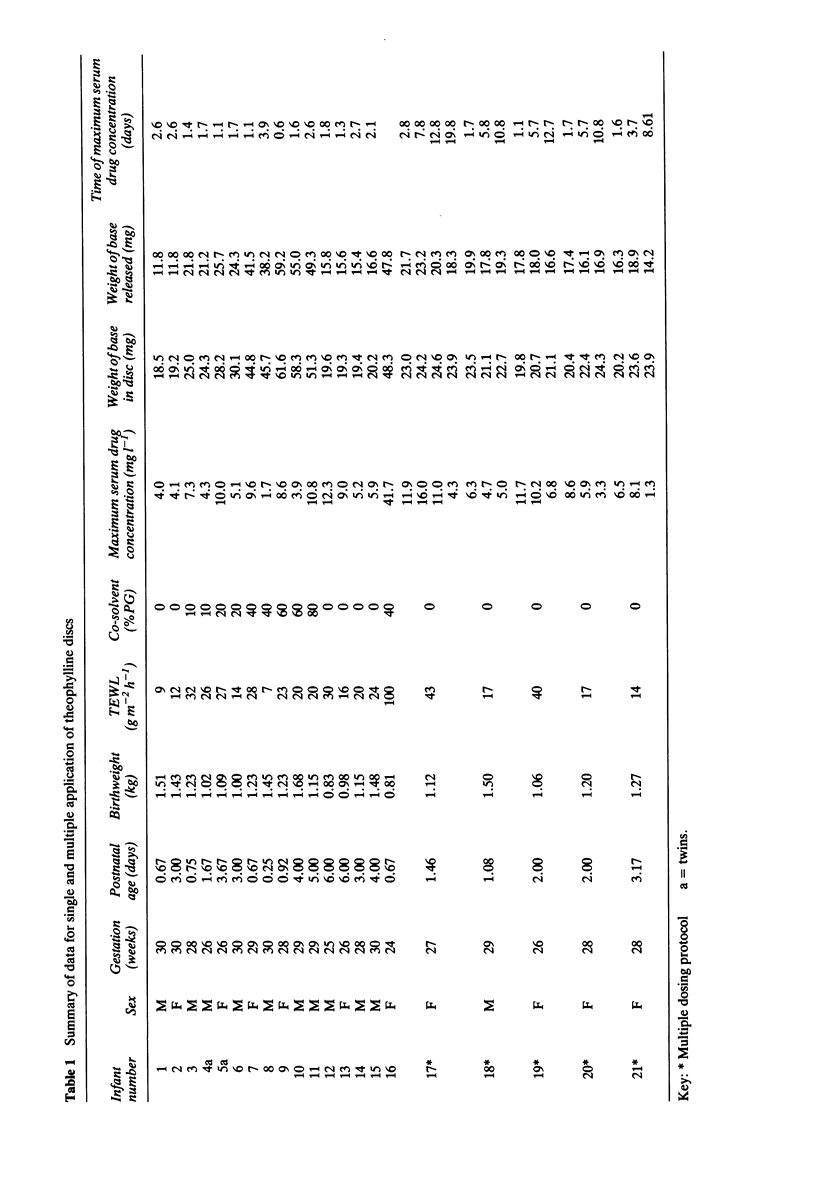
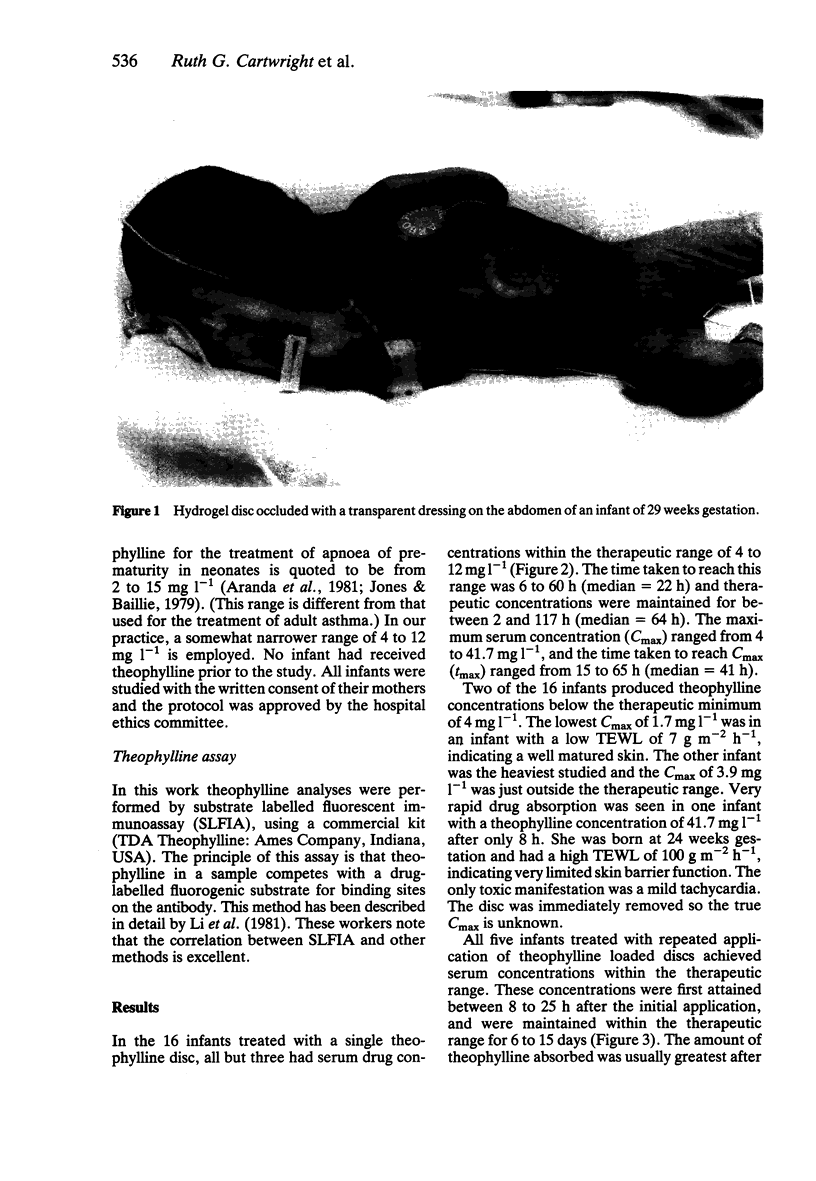
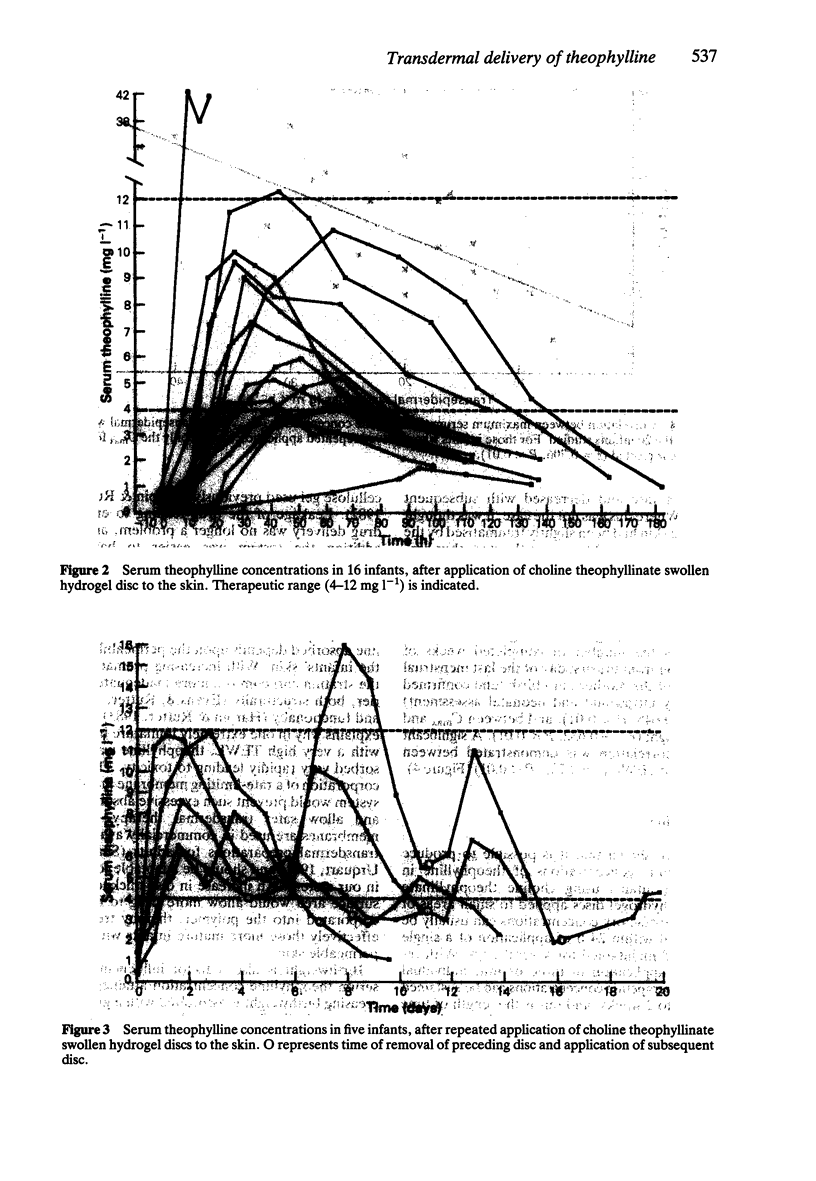
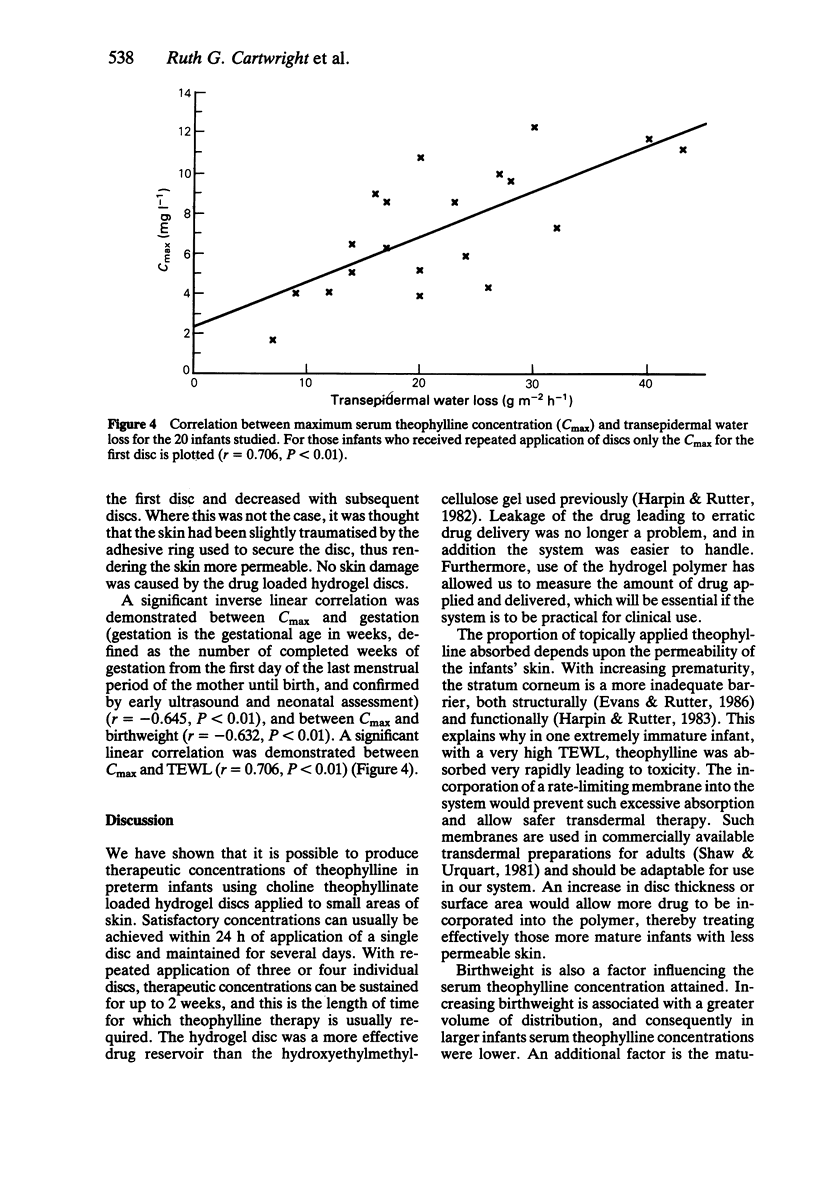
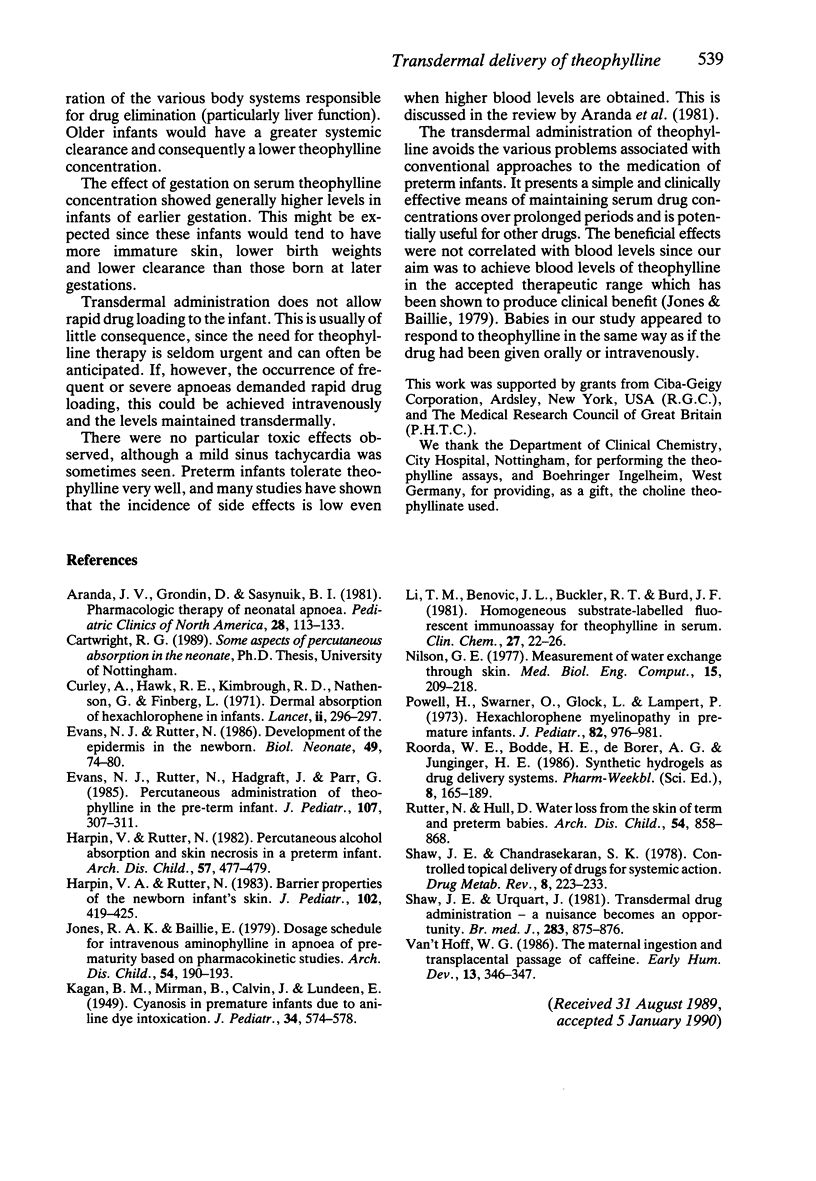
Images in this article
Selected References
These references are in PubMed. This may not be the complete list of references from this article.
- Aranda J. V., Grondin D., Sasyniuk B. I. Pharmacologic considerations in the therapy of neonatal apnea. Pediatr Clin North Am. 1981 Feb;28(1):113–133. doi: 10.1016/s0031-3955(16)33965-7. [DOI] [PubMed] [Google Scholar]
- Curley A., Kimbrough R. D., Hawk R. E., Nathenson G., Finberg L. Dermal absorption of hexochlorophane in infants. Lancet. 1971 Aug 7;2(7719):296–297. doi: 10.1016/s0140-6736(71)91337-7. [DOI] [PubMed] [Google Scholar]
- Evans N. J., Rutter N. Development of the epidermis in the newborn. Biol Neonate. 1986;49(2):74–80. doi: 10.1159/000242513. [DOI] [PubMed] [Google Scholar]
- Evans N. J., Rutter N., Hadgraft J., Parr G. Percutaneous administration of theophylline in the preterm infant. J Pediatr. 1985 Aug;107(2):307–311. doi: 10.1016/s0022-3476(85)80157-8. [DOI] [PubMed] [Google Scholar]
- Harpin V. A., Rutter N. Barrier properties of the newborn infant's skin. J Pediatr. 1983 Mar;102(3):419–425. doi: 10.1016/s0022-3476(83)80669-6. [DOI] [PubMed] [Google Scholar]
- Harpin V., Rutter N. Percutaneous alcohol absorption and skin necrosis in a preterm infant. Arch Dis Child. 1982 Jun;57(6):477–479. doi: 10.1136/adc.57.6.477. [DOI] [PMC free article] [PubMed] [Google Scholar]
- Jones R. A., Baillie E. Dosage schedule for intravenous aminophylline in apnoea of prematurity, based on pharmacokinetic studies. Arch Dis Child. 1979 Mar;54(3):190–193. doi: 10.1136/adc.54.3.190. [DOI] [PMC free article] [PubMed] [Google Scholar]
- Li T. M., Benovic J. L., Buckler R. T., Burd J. F. Homogeneous substrate-labeled fluorescent immunoassay for theophylline in serum. Clin Chem. 1981 Jan;27(1):22–26. [PubMed] [Google Scholar]
- Nilsson G. E. Measurement of water exchange through skin. Med Biol Eng Comput. 1977 May;15(3):209–218. doi: 10.1007/BF02441040. [DOI] [PubMed] [Google Scholar]
- Powell H., Swarner O., Gluck L., Lampert P. Hexachlorophene myelinopathy in premature infants. J Pediatr. 1973 Jun;82(6):976–981. doi: 10.1016/s0022-3476(73)80428-7. [DOI] [PubMed] [Google Scholar]
- Shaw J. E., Chandrasekaran S. K. Controlled topical delivery of drugs for systemic action. Drug Metab Rev. 1978;8(2):223–233. doi: 10.3109/03602537808993785. [DOI] [PubMed] [Google Scholar]
- Shaw J. E., Urquhart J. Transdermal drug administration--a nuisance becomes an opportunity. Br Med J (Clin Res Ed) 1981 Oct 3;283(6296):875–876. doi: 10.1136/bmj.283.6296.875. [DOI] [PMC free article] [PubMed] [Google Scholar]



